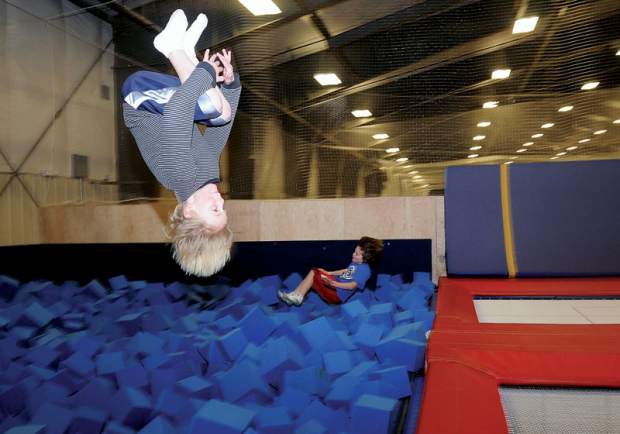Jumping on a trampoline can be a great way to enjoy the summer days while also breaking a sweat. While some people have their own personal trampoline, many opt for a more extreme experience at a trampoline park. These warehouses are usually packed from wall to wall with trampolines and foam pits to enjoy. Most of these parks even hold activities like dodgeball or dunking contests on the trampolines.
However, participants should be aware of the potential dangers that surround this activity, because sometimes you can break more than just a sweat. While the majority of injuries are fractures and sprains, trampoline use can still cause catastrophic damage to a jumper. Before you sign that liability waiver, here are 3 things to consider about the safety of trampoline parks.
Table of Contents
Injury Statistics
Many people insist that the dangers surrounding trampoline parks are exaggerated. Eric Beck, owner of Xtreme Trampoline in Chicago, reported that very few injuries occur at his establishment. In 2006, he claimed only 2 per 1,000 trampoline jumpers get injured at his park.
While Beck’s numbers are impressive, you shouldn’t go to a trampoline park banking on the belief that injury is unlikely. According to the U.S. Consumer Product Safety Commission, there were 92,159 trampoline related injuries that required emergency room attention in 2010.
Additionally, about 3-quarters of the injuries that occurred happened when more than one person was using the same trampoline at the same time. This scenario is not uncommon at trampoline parks, due to its widespread popularity and the masses that flock to these locations. What’s even more worrisome is a report from 2013 that showed 20% of all injuries to the spinal cord caused by trampoline use are due to jumpers bumping into each other, trying to do stunts, falling off the trampoline, or falling onto the frame or springs of the trampoline. All of these accidents are common occurrences at trampoline parks.
Safety Precautions that Aren’t Very Safe
Falling onto the frame or springs of the trampoline can cause severe injuries. The majority of trampoline parks do have padding on these sections of the trampoline, but they aren’t always enough to protect jumpers from injury. In fact, even the foam pits can be a cause for worry, as patrons rely on this false sense of security and will often attempt reckless stunts.
In 2013, one teen named Catherine Bryan attempted a back flip into one of the foam pits after seeing the person before her do it. While attempting the stunt, Catherine was nearly paralyzed after landing on her head in the pit. The year before, a 30-year-old man named Ty Thomasson somersaulted into a foam pit at a trampoline park and died from his injuries. Catherine and Ty’s stories are devastating and not uncommon.
Another frequent cause for injury is double jumping. Most trampoline parks have rules against double jumping, or launching one person high into the air by landing on the trampoline just as the other person attempts to jump. The problem with this rule though is that double jumping cannot be effectively restricted if the business allows more than one jumper on each trampoline surface at a time.
If there are no explicit rules regarding how many people are allowed to use the trampoline at the same time, double jumping can still unintentionally occur and cause injury.
The Lack of Trampoline Park Regulations
As of now, there are no federal regulations for trampoline parks. Only Arizona and Michigan have specific safety laws that their parks must follow. Any safety guidelines asserted by an individual park is voluntary and may not be as extensive as you would hope.
As Maureen Kerley, the mother of Ty Thomasson who was responsible for getting the safety laws in Arizona, recalled, “There was no medical procedure in place” when Ty got hurt.
Ditch the Trampoline
While every physical activity is dangerous to an extent, trampoline sports can be especially unsafe due to the risky behavior that often occurs at no fault of your own. In 2012, The American Academy of Pediatrics urged pediatricians to “actively discourage recreational trampoline use.”
The enjoyment of jumping on a trampoline is not worth the potential risks of injury or death.
If you have been injured while playing on a trampoline, or know someone who has, check out how Kollin Gard, a fourteen-year-old boy who was paralyzed after a trampoline accident, worked to overcome his disability thanks to the love and support of his family and peers.
Photo copyright to Clintus
